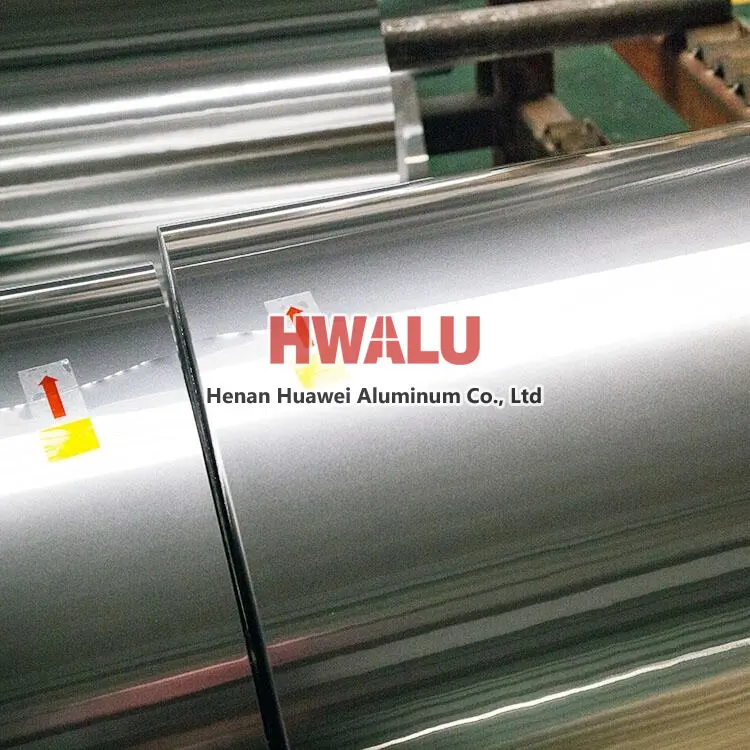Can aluminum foil be used in food containers? Aluminum foil, as a metal material, is commonly used in the manufacture of food containers. Aluminum foil containers are a popular choice for packaging and storing all types of food due to their lightweight, corrosion resistance and thermal conductivity properties. Has many characteristics. 1. Aluminum foil container has corrosion resistance: the surface of alumin ...
Introduction: Welcome to Huawei Aluminum, a trusted name in the aluminum industry. Our 14 Micron Aluminum Foil for Food Use is a top-quality product that serves various purposes in the food packaging and laminated materials sector. In this detailed guide, we will delve into the specifics of our 14 Micron Aluminum Foil, discussing its alloy models, specifications, applications, advantages, and more. Alloy Mo ...
What is aluminum foil for tablet packaging Moisture-proof, anti-oxidation and light-proof properties: Aluminum foil for tablet packaging has excellent moisture-proof, anti-oxidation and light-proof properties, which can effectively protect medicines from moisture, oxygen and light, thereby prolonging the shelf life and validity period of medicines. Good adhesion: Aluminum foil for tablet packaging has excelle ...
What is Aluminum Foil for Pans Aluminum foil for pans is usually thicker and stronger than typical kitchen foil to withstand high heat and stress. Aluminum foil for pans can be used to cover the bottom of pans to keep food from sticking to them, and to make liners for steamers and bakeware to prevent food from sticking to the bottom or to the pan. The use of aluminum foil for pans is similar to that of ordina ...
Cigarette aluminum foil parameters Alloy: 3004 8001 Thickness: 0.018-0.2mm Length: can be customized according to customer needs Surface: One side has a high light emissivity, and the other side has a soft matt finish. what is the metallic paper in a cigarette box The metallic paper in cigarette packs is aluminum foil. One is to keep fragrance. Aluminum foil can prevent the smell of cigarette ...
Introduction of 8011 alloy aluminum foil 8011 alloy aluminum foil is added Al-Fe-Si elements, more than 1% of the total alloying elements in the corresponding performance of its alloy has a higher advantage, mainly for food packaging, and pharmaceutical packaging. Machinable range of thickness: 0.02mm-0.07mm, width 300mm-1100mm, can be customized according to customer needs. General parameters of aluminu ...
Aluminum foil is typically thinner than aluminum coil. Aluminum foil is typically available in various thicknesses, ranging from as thin as 0.005 mm (5 microns) up to 0.2 mm (200 microns). The most commonly used thicknesses for household aluminum foil are around 0.016 mm (16 microns) to 0.024 mm (24 microns). It is commonly used for packaging, cooking, and other household purposes. On the other hand, alumin ...
Food packaging aluminum foil is related to human health and safety, and is usually produced with specific specifications and characteristics to ensure its suitability for the food industry. The following are some common specifications of aluminum foil for food packaging: Food packaging foil alloy types: Aluminum foil used for food packaging is usually made from 1xxx, 3xxx or 8xxx series alloys. Common alloys in ...
Aluminum foil is a good packaging material and can be used for food packaging and pharmaceutical packaging. It can also be used as a conductive material. As a conductive material, aluminum foil has many advantages compared with other metals. What is the difference in conductivity between aluminum foil and other metals? This article will describe how aluminum foil conducts electricity compared to other metals. ...
Common aluminum foil materials are 8011 aluminum foil and 1235 aluminum foil. The alloys are different. What's the difference? Aluminum foil 1235 aluminum foil is different from 8011 aluminum foil alloy. The process difference lies in the annealing temperature. The annealing temperature of 1235 aluminum foil is lower than that of 8011 aluminum foil, but the annealing time is basically the same. 8011 aluminum foi ...
People are stepping up the search for safer, lower cost, more powerful battery systems that outperform lithium-ion batteries, so aluminum foil has also become a material for making batteries. Aluminum foil can be used in batteries in some cases, especially as an integral part of the battery structure. Aluminum foil is commonly used as a current collector for various types of batteries, including lithium-ion an ...
The biggest feature of aluminum foil is its light weight and wide range of uses, suitable for aviation, construction, decoration, industry and other industries. Aluminum is very cost-effective, and its electrical conductivity is second only to that of copper, but the price is much cheaper than that of copper, so many people now choose aluminum as the main material for wires. 1060, 3003, 5052 are several common ...












